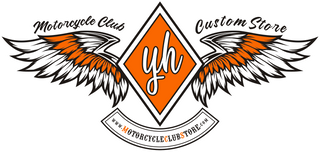
In the world of subcultures and organized groups, it's easy to get confused between the various terms thrown around, such as street gangs, motorcycle clubs, and prison gangs. While they may seem similar on the surface, each of these entities is vastly different in terms of their purpose, structure, and culture. As a brand that specializes in serving global motorcycle clubs, we believe it's essential for our customers to understand these distinctions. In this blog, we'll break down the key differences between street gangs, motorcycle clubs, and prison gangs to shed light on their unique identities.
Street Gangs: The Illusive Criminal Brotherhood
Street gangs are often associated with criminal activities, violence, and territorial disputes. They typically consist of individuals, predominantly young adults, who come together based on shared geographical locations, common ethnic backgrounds, or criminal enterprises. Street gangs are notorious for their involvement in illegal activities like drug trafficking, theft, and assault.
-
Structure: Street gangs tend to have loose and disorganized structures, with leadership often changing due to power struggles or law enforcement interference.
-
Culture: Street gangs are characterized by a culture of violence and criminal behavior, with initiation rituals and loyalty tests that involve committing crimes.
-
Territory: They often claim control over specific neighborhoods or regions, resulting in violent turf wars with rival gangs.
Motorcycle Clubs: The Brotherhood of the Open Road
Motorcycle clubs, on the other hand, are a different breed altogether. They are formed by enthusiasts who share a passion for motorcycles and the freedom of the open road. Motorcycle clubs vary in size and culture, but they all have a strong sense of brotherhood and a commitment to their club's values.
-
Structure: Motorcycle clubs have a more structured hierarchy, with elected leaders and formal rules governing membership and behavior.
-
Culture: These clubs are defined by their love for riding, camaraderie among members, and a sense of belonging. Many clubs have a code of ethics and conduct that members adhere to.
-
Purpose: Motorcycle clubs often engage in charity work, rides for a cause, and community outreach, emphasizing their positive contributions to society.
Prison Gangs: The Dark Side of Incarceration
Prison gangs are a unique category, born within the confines of correctional facilities. Inmates form these groups based on shared racial, ethnic, or criminal affiliations. Their primary focus is survival and protection within the brutal prison environment.
-
Structure: Prison gangs maintain strict hierarchies, with leaders exerting control both inside and outside of prison walls.
-
Culture: Their culture is marked by violence, extortion, and criminal enterprises within prison walls, often extending their influence into the outside world.
-
Purpose: Survival, protection, and the pursuit of criminal interests are the driving forces behind prison gangs.
Our Role in Motorcycle Club Culture
At motorclubshop, we understand the unique identity and values of motorcycle clubs. Our one-stop-shop peripheral product design and customization services cater to the individuality and pride that motorcycle club members hold dear. We offer a wide range of products, including patches, biker pins, rings, and more, to help clubs create a distinct image and culture that celebrates their brotherhood and passion for riding.
Conclusion
In the world of subcultures and organized groups, it's crucial to distinguish between street gangs, motorcycle clubs, and prison gangs. While street gangs are often associated with criminal behavior, motorcycle clubs represent a brotherhood of riders bonded by their love for motorcycles, and prison gangs are a product of the harsh realities of incarceration. At motorclubshop, we take pride in serving motorcycle clubs worldwide, helping them express their unique identities and cultures through our customized products. We believe that understanding these differences is essential for our customers, as it enriches their appreciation for the diverse world of motorcycle club culture.
